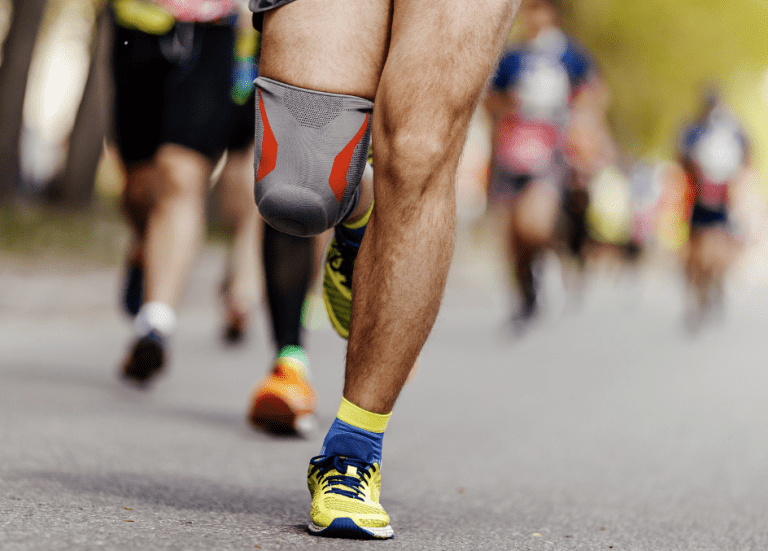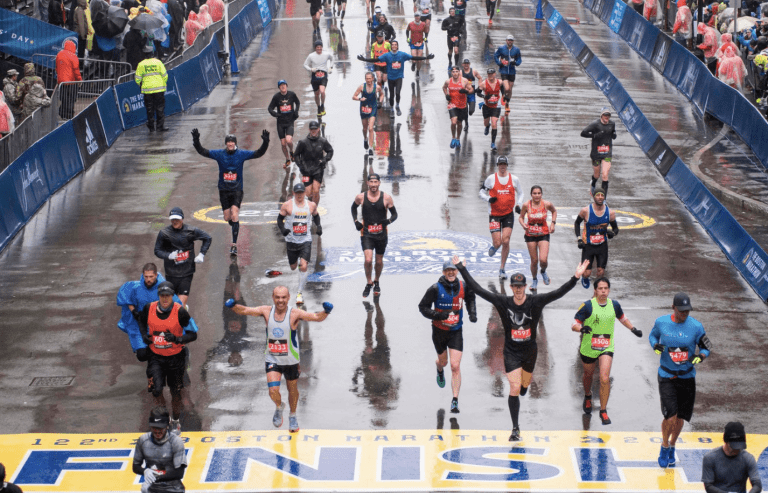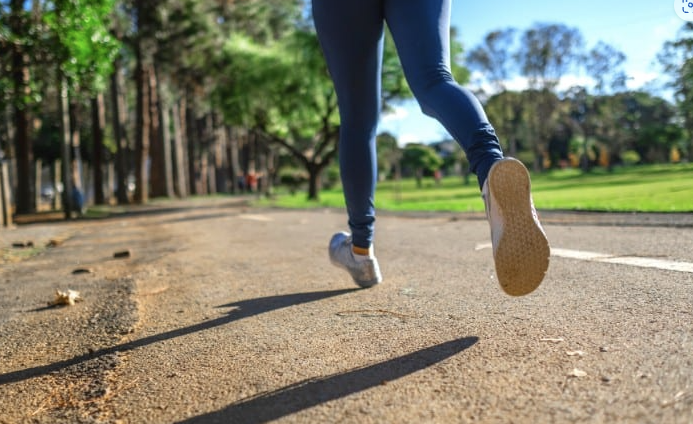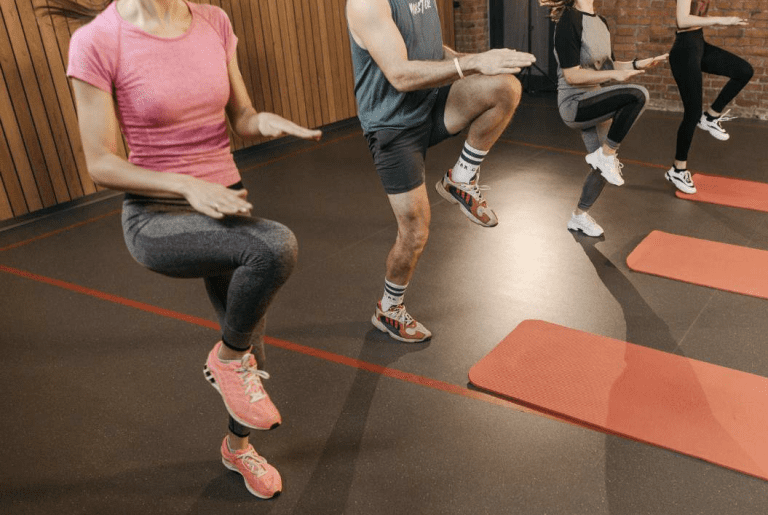Can you jog after hip replacement surgery? It’s a question that many patients with an active lifestyle often ask. In this comprehensive guide, we will delve into the recovery process following traditional total hip replacements and explore how one can gradually return to activities like jogging.
We’ll take you through the journey of recovery post-surgery, discussing timelines and techniques for regaining muscle strength in your hips. You’ll hear inspiring stories of runners who’ve successfully returned to pain-free running even after having their left hip replaced.
The role of physical therapy in rehabilitation cannot be overstated; hence, we will also highlight its importance during the post-operative period. Furthermore, we discuss life beyond major surgeries like total hip replacements and how pacing oneself while planning future sporting events is crucial.
Lastly, we consider other options besides complete joint replacements such as hip resurfacing. Are they viable alternatives? What are the risks associated with high impact activities on late-stage osteoarthritis patients? Can you indeed jog after a hip replacement? Read on to find out more.
The Journey of Recovery After Hip Replacement
Recovering from hip replacement surgery is a unique journey for each person. Regaining strength and suppleness in the hip muscles is an integral part of recuperation after a hip replacement, so that one can get back to their usual activities – such as running.
Understanding the Timeline for Post-Surgery Recovery
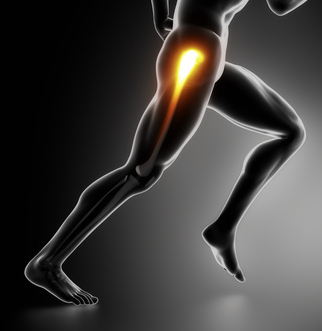
The typical recovery period after hip replacement surgery ranges between 3-6 months. Recovery duration may differ depending on elements such as age, state of health, and observance to physical therapy sessions. The first few weeks are generally focused on managing pain and swelling while gradually increasing mobility with walking aids like crutches or walkers.
Around six weeks post-surgery, most people can walk without support and start driving again. By three months, they’re usually able to perform light activities such as swimming or cycling. High impact exercises like running should only be reintroduced around six months after surgery when the hip joint has fully healed.
Techniques for Regaining Muscle Strength in Hips
To regain muscle strength in your hips after surgery, it’s crucial to adhere strictly to the rehabilitation plan set by your physiotherapist. This typically includes strengthening exercises targeting key muscle groups supporting the hip joint: gluteus maximus (your buttock), quadriceps (front thigh), and hamstrings (back thigh).
- Gentle stretching: Start with gentle stretches under supervision before progressing towards more challenging ones once comfortable.
- Bridges: Lying flat on your back and lifting your pelvis off the ground helps strengthen both glutes and hamstrings simultaneously.
- Squats: Assisted squats initially using chair/wall support can help build up quad strength over time leading eventually into unassisted full squats.
Remember, everyone heals at their own pace, so it’s important not to rush through these stages, risking potential injury. Always consult with healthcare professionals regarding appropriate timelines based upon personal progress during regular check-ups, ensuring a safe and effective rehabilitation process post-surgery.
Patience is key here. You’ll need plenty of it along this journey, but rest assured all hard work will pay off, allowing resumption of favorite high impact sports, including jogging, sooner than later.
Recovering from hip replacement surgery takes time and patience, with a typical recovery period of 3-6 months. To regain muscle strength in the hips, it’s important to follow a rehabilitation plan set by your physiotherapist that includes exercises like gentle stretching, bridges, and squats. High impact exercises like jogging should only be reintroduced around six months after surgery when the hip joint has fully healed.
Inspiring Stories of Runners Post-Hip Replacement Surgery
Hip replacement surgery is a major procedure that requires significant recovery time and can limit mobility. But with determination, physical therapy, and the right mindset, it’s possible to regain pre-surgery stamina levels – even for avid runners.
Determination Can Help Regain Pre-Surgery Stamina Levels
Take Tom as an example. He was always on his feet – running marathons or just jogging around the neighborhood park. But when arthritis developed due to injuries, he had to undergo total hip replacement surgery.
Tom persevered to overcome his injury and resumed running, ultimately achieving a triumphant marathon finish post-total hip replacement surgery. With consistent effort in physical therapy sessions, he managed to get back on track and regain his pre-surgery stamina levels.
Successful Marathon Participation Post-Total Hip Replacement Surgery
There are countless inspiring stories out there like Missy Gosney and Sam Szura who underwent similar surgeries yet didn’t let their passion fade away.
- Missy Gosney: A dedicated runner who faced severe hip problems due to hereditary factors leading eventually towards a complete joint replacement surgery at 49 years old. Despite this setback, she made an amazing comeback by participating in half-marathons post-recovery. source
- Sam Szura: She suffered from debilitating osteoarthritis which resulted in two total hip replacements within six months apart at age 52. Her strong willpower led her towards completing multiple full marathons after these procedures without any discomfort or complications. source
Their incredible journeys show us how life doesn’t stop after such major surgeries if you have the right attitude and dedication towards your goals along with appropriate care routines & balanced exercises regimes under professional guidance.
All these examples prove that undergoing a major surgical procedure like total hip replacement does not mean giving up high impact activities such as jogging/running forever. Instead, it opens doors towards exploring new ways of maintaining active lifestyles while taking necessary precautions & modifications according to individual needs post-surgical rehabilitation period under medical supervision.
The article discusses inspiring stories of runners who have undergone hip replacement surgery and managed to regain their pre-surgery stamina levels through determination, physical therapy, and the right mindset. Examples include Tom, Missy Gosney, and Sam Szura who all showed that undergoing a major surgical procedure like total hip replacement does not mean giving up high impact activities such as jogging/running forever but rather opens doors towards exploring new ways of maintaining active lifestyles while taking necessary precautions & modifications according to individual needs post-surgical rehabilitation period under medical supervision.
The Role of Physical Therapy in Post-Surgical Rehabilitation
After undergoing a major surgery like total hip replacement, physical therapy is essential for regaining strength and mobility in order to return to your active lifestyle. Physical therapy is a must for regaining the strength and flexibility in your new joint after surgery, so you can return to your regular activities.
Why Regular Physical Therapy Sessions are Important
Physical therapy sessions are crucial during rehabilitation for several reasons. First, they help reduce pain and swelling post-surgery. Therapists may assist in increasing blood flow, which can hasten healing and reduce the possibility of issues like clots.
But that’s not all. Physical therapists guide patients through exercises designed to restore range of motion and strengthen muscles around the new joint. This is essential because strong muscles provide better support for your artificial hip, reducing strain on it when you engage in high impact activities like jogging or running.
Case Study – TCS New York City Marathon Participant
Let’s take a look at John Doe (name changed), who participated in the TCS New York City Marathon six months after his total hip replacement surgery. Doe was determined not to let this setback deter him from achieving his goal.
Doe started attending regular physical therapy sessions soon after his operation where he worked tirelessly under professional guidance to regain muscle strength around his hips while maintaining flexibility. His therapist gradually introduced low-impact cardiovascular exercises into his regimen before slowly transitioning him back into jogging over time.
This methodical approach paid off tremendously as Doe successfully completed the marathon without any discomfort or setbacks. The key takeaway here is that with determination combined with appropriate care routines including regular physiotherapy sessions, even significant procedures like total hip replacements need not put an end to one’s passion for running.
Physical therapy is essential for post-surgical rehabilitation after a total hip replacement. It helps reduce pain and swelling, improves blood circulation, restores range of motion and strengthens muscles around the new joint. With determination and appropriate care routines including regular physiotherapy sessions, even significant procedures like total hip replacements need not put an end to one’s passion for running.
Life Beyond Major Surgeries Like Total Hip Replacement
As a runner who’s undergone total hip replacement surgery, you might wonder if you can still participate in marathons. The answer is yes. With proper care and exercise, many have resumed their love for running post-surgery.
Pacing Yourself for Sporting Events
Returning to sports after major surgeries like total hip replacements requires pacing yourself. Gradually reintroduce jogging or running while listening to your body’s signals. Start with low-impact exercises like swimming or cycling before transitioning to more strenuous activities. Set realistic goals and remember that patience is crucial.
Exercise Regimes & Care Routines
A balanced exercise regime is crucial for maintaining an active lifestyle post-surgery. Incorporate strength training and flexibility exercises to improve muscle tone and stability. The American Academy of Orthopaedic Surgeons (AAOS) recommends specific exercises for joint replacement recovery.
- Strength Training: Leg presses, squats, and lunges strengthen muscles supporting the hips.
- Mobility Exercises: Walking or stationary biking improves range-of-motion.
- Flexibility Workouts: Stretching routines aid movement and prevent stiffness.
Adopt appropriate care routines, including following dietary recommendations for bone health and regular check-ups to monitor progress since surgery.
The journey beyond major surgeries isn’t easy, but it’s possible. Countless stories showcase how people have bounced back stronger despite undergoing significant procedures like total hip replacements.
Exploring Other Options Besides Complete Joint Replacements
If you’re under 60 and suffering from late-stage osteoarthritis, the thought of a complete joint replacement might be daunting. But did you know there are other options available today that can help manage your condition without risking further degeneration or development of new joint-related issues caused by high impact activities like jogging/running? One such option is Hip Resurfacing.
Hip resurfacing – A viable alternative?
In contrast to total hip replacement surgery, where the entire hip joint is replaced with an artificial one, Hip Resurfacing involves replacing only the damaged surfaces of the joints. This procedure has been gaining popularity as it allows patients to retain more natural bone tissue and provides greater stability post-surgery.
The advantage here is twofold: Firstly, retaining more natural bone means less invasive surgery and potentially quicker recovery times. Secondly, this technique provides better long-term potentials for those who desire to remain involved in intense sporting activities such as running or jogging after their surgery.
The risks associated with high impact activities on late-stage osteoarthritis patients
While staying active is important for overall health and well-being, certain types of physical activity can pose challenges for individuals dealing with advanced stages of arthritis. High-impact activities can be detrimental to late-stage osteoarthritis patients, so it is essential to find a balance between strength training and cardiovascular workouts that will not overstress the joints.
- Maintain balance: It’s crucial that any exercise regime balances strength training (to support your joints) with cardiovascular workouts (for heart health).
- Pace yourself: Start slow and gradually increase intensity levels based on how comfortable you feel during workouts.
- Avoid overdoing it: Listen to your body. If something doesn’t feel right during or after exercising – stop immediately.
This isn’t meant to scare anyone away from being active but rather serve as a reminder about the importance of managing physical activity responsibly when living with conditions like osteoarthritis.
To summarize: Yes. You absolutely can jog again even after undergoing major procedures like total hip replacements; however always remember that everyone’s journey towards recovery will look different depending upon various factors including age, general health status etc., so please consult your healthcare provider before starting any new fitness program post-surgery.
Hip resurfacing is a viable alternative to complete joint replacements for those under 60 suffering from late-stage osteoarthritis who wish to continue engaging in high-impact sports like running or jogging after their operation. However, it’s important to manage physical activity responsibly when living with conditions like osteoarthritis by maintaining balance, pacing oneself and avoiding overdoing it. Always consult your healthcare provider before starting any new fitness program post-surgery.
FAQs in Relation to Can You Jog After Hip Replacement
Starting Jogging After Hip Replacement: Tips and Tricks
Begin with low-impact exercises like walking, gradually increasing distance and speed, and transition to a light jog under your doctor’s guidance.
Activities to Avoid After Hip Replacement Surgery
Avoid high-impact sports like football and basketball that involve jumping and sudden movements, and consult your physician for personalized advice.
Playing Sports After Hip Replacement: What You Need to Know
Participate in lower-impact sports such as golf, swimming, or cycling post-recovery, but approach running with caution.
Using a Treadmill After Hip Replacement: Safety Tips
Treadmill use is generally safe post-recovery, but always begin slowly under professional supervision and consider using incline settings for added challenge without increased risk. Check out this article for more information on treadmill exercises after hip replacement.
Conclusion
Yes, you can jog after hip replacement surgery! Proper care and rehabilitation, including physical therapy, can help you regain your pre-surgery fitness levels.
Don’t believe us? Check out inspiring stories of runners who have completed marathons after total hip replacement surgery.
But if you’re not a suitable candidate for complete joint replacements, consider exploring alternative options like hip resurfacing.


